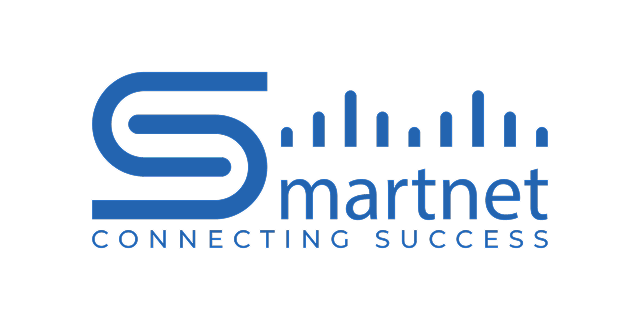With so many Large Language Models (LLMs) out there, selecting the right LLM is crucial for any organization looking to integrate AI into its operations. Whether you’re developing AI-driven applications, automating tasks, or exploring AI for code generation, your choice of LLM can significantly influence your project’s success.
Before diving into the technical details of selecting a Large Language Model, it\’s crucial to first define your business goals and specific use cases. Determine the tasks you need the model to handle—whether it\’s Natural Language Processing (NLP) for customer support, speech recognition, a multimodal model for combining text and images, or AI-assisted code generation. Start by identifying the specific modality you need. If you\’re focused on text processing, choose a text model—there\’s no need for an image or audio model. However, if your task involves table parsing, image analysis, or audio processing, you\’ll need a model tailored to that specific modality.
Some LLMs are better suited for solving specific business challenges than others; one size does not fit all. By aligning the model’s capabilities with your business objectives, you can ensure that the technology you choose will effectively address your needs and deliver measurable value.
This blog will guide you through the key considerations when choosing an LLM, especially for AI code generation, and will compare commercial and open-source LLMs to help you make an informed decision.
Commercial LLMs vs. Open-Source LLMs
There are two main categories of LLMs: commercial Large Language Models and open-source Large Language Models. Commercial LLMs, developed by companies like OpenAI, Google, or Microsoft, are proprietary models that come with a subscription fee. Open-source LLMs, such as those from the Hugging Face or Meta AI, are developed and maintained by a community of contributors and are freely available for anyone to use and modify. The choice between commercial and open-source LLMs often depends on factors like expertise, budget, and the specific requirements of the project. Let\’s now look at these factors and compare the strengths and weaknesses of commercial and open-source LLMs to help you make the best choice for your needs.
Expertise and Setup
Commercial LLM: These models are generally ready to use with minimal setup required. For instance, OpenAI’s GPT-4 offers pre-built capabilities that can be easily integrated into your applications, making it ideal for teams with limited AI/ML expertise. This approach is perfect for those looking to get started quickly without the need for deep technical knowledge.
Open-Source Pre-Trained LLM: On the other hand, models like Meta’s LLaMA or OPT require significant expertise in fine-tuning and deployment. These models are more flexible and can be customized to fit specific needs, but they demand a team with strong AI/ML skills. This setup is ideal for organizations with in-house expertise that can manage and optimize these models to get the best results.
Budget Considerations
Commercial LLM: If you’re looking to minimize upfront costs, commercial LLM APIs are the way to go. They allow you to get your Minimum Viable Product (MVP) up and running quickly without the need for large R&D investments. However, keep in mind that as you scale, costs can rise significantly, especially with API usage fees.
Open-Source Pre-Trained LLM: While the initial investment in setting up an open-source model may be higher, the long-term cost efficiency is better. Once the model is fine-tuned and deployed, you avoid the recurring API fees, making this option more cost-effective at scale.
Time to Market
Commercial LLM: If speed is your priority, commercial LLM APIs offer the fastest route to market. They are designed for rapid deployment, allowing you to quickly integrate AI capabilities into your applications. However, relying on these APIs may limit your competitive edge in the long run due to the lack of differentiation.
Open-Source Pre-Trained LLM: Although it takes more time to set up and fine-tune open-source models, the payoff is worth it. Customizations and optimizations can give you a sustainable competitive advantage, particularly in specialized use cases like AI code generation.
Control Over Model Quality & Customization
Commercial LLM: With commercial LLM APIs, your control over the model is limited. These models often operate as “black boxes,” meaning you can’t modify their inner workings. This lack of control can be a drawback if you need the model to behave in a specific way or adhere to particular standards, such as secure coding practices.
Open-Source Pre-Trained LLM: Open-source models offer complete control over their architecture and behavior. For example, fine-tuning a model like GPT-J or CodeLlama allows you to optimize it for code generation tasks, ensuring the generated code meets your specific quality and security standards.
Data Privacy
Commercial LLM: Many commercial models require sending your data to third-party servers for processing. This can be a dealbreaker for organizations dealing with sensitive data or operating in highly regulated industries.
Open-Source Pre-Trained LLM: With open-source models, you have full control over your data. You can host the model on-premises, ensuring that all data stays within your organization’s secure environment. This is particularly important for companies handling confidential or sensitive information.
Inference Speed
Commercial LLM: Commercial LLMs\’ inference speed is generally fast, but it can be impacted by API delays, high latency, or disruptions, especially as usage scales. This can be a bottleneck in time-sensitive applications.
Open-Source Pre-Trained LLM: Open-source models give you the flexibility to optimize for lower latency, enabling faster and more consistent performance. Deploying the model locally on powerful, dedicated hardware, you can achieve better inference speeds.
Cost Efficiency at Scale
Commercial LLM: While commercial LLMs are easy to start with, costs can balloon as you scale, especially with per-token pricing models. This can become a significant expense for large-scale projects.
Open-Source Pre-Trained LLM: Once set up, open-source models typically offer a more predictable and lower-cost structure. For example, models like CodeParrot can be run on your own infrastructure, making them more cost-effective in the long run.
Size of LLM
The size of an LLM is typically measured by the number of parameters it contains. Parameters are the elements within the model that are learned from the data during training, and they play a critical role in the model’s ability to understand and generate text. The key to choosing the right LLM lies in balancing the model’s size with your application’s specific requirements, cost constraints, and deployment environment. Often, experimenting with different model sizes and configurations can help identify the best fit.
Commercial LLM: Commercial LLMs, developed by companies like OpenAI and Google, typically offer larger and more sophisticated models. These models have been trained on vast datasets and have undergone extensive fine-tuning, making them highly capable but also resource-intensive. The size of these models often translates to better performance, especially for complex tasks, but it also requires more powerful hardware and more substantial investment in terms of computational resources.
Open-Source Pre-Trained LLM: Open-source LLMs vary widely in size. While there are some large open-source models that rival commercial offerings, many open-source models are designed to be more lightweight and accessible, catering to developers who may not have access to high-end hardware. These smaller models are easier to deploy and can be more cost-effective, but they might not offer the same level of performance or accuracy as their larger, commercial counterparts. However, the flexibility to customize and optimize (fine-tuning, using RAG) these models for specific tasks can sometimes offset the limitations of size.
LLMs for AI Code Generation
Choosing the right LLM for AI code generation involves balancing various factors such as code quality, security, customization, model size, and cost. Consider scalability and the balance between cost and performance. Additionally, ensure the model aligns with your ethical standards and has strong support, whether from a vendor or the open-source community.
When choosing an LLM for AI code generation, consider these additional criteria:
Supported Programming Languages: Ensure the LLM supports the programming languages you\’re using in your project.
Code Quality: Look for an LLM that generates clean, well-structured, and efficient code.
Accuracy: The LLM should be able to generate code that functions correctly and meets your requirements.
Integration Capabilities: Consider how the LLM integrates with your development workflow and tools.
Some popular LLMs used for AI code generation include:
OpenAI Codex (Commercial): This LLM is specifically designed for code generation and can translate natural language instructions into Python, Java, JavaScript, and other programming languages.
GitHub Copilot (Commercial): This AI assistant, powered by OpenAI Codex, can suggest code completions and functions as you type. It integrates directly into development environments (IDEs) like Visual Studio Code.
TabNine (Commercial): This AI coding assistant is designed for code completion and generation. It supports a wide range of programming languages and focuses on seamlessly integrating into various IDEs.
Code LLaMA (Open source): A variant of the LLaMA model family, CodeLlama supports multiple programming languages and excels at generating and completing code with high accuracy. With fine-tuning, this model can be adapted for specific coding tasks, making it a versatile option.
GPT-J (Open source): An open-source alternative that, with the right customization, can be tailored for generating clean, high-quality code.
StarCoder (Open source): An open-source model trained on diverse programming languages, and ideal for tasks like code completion, synthesis, and refactoring.
Ensuring the Quality and Security of AI-generated Code
While LLMs can significantly speed up the software development process by generating code quickly, they also come with potential risks. The code produced by these models may contain bugs or security vulnerabilities that could compromise the reliability and safety of your software. To mitigate these risks, it\’s essential to conduct thorough code reviews using specialized tools like SonarQube and SonarCloud. These tools are designed to automatically analyze your code for common errors, potential security flaws, and adherence to best practices. By integrating these checks into your development process, you can ensure that the code generated by the LLM is not only efficient but also secure and reliable. This approach helps you maintain high standards in your software projects, reducing the likelihood of issues that could lead to costly fixes or security breaches down the line.
For more information, please contact to contact@smartnet.net.vn
Share
Tin khác
SmartNet signs cooperation agreement with MonitorAPP
SmartNet, a Hanoi-based distributor of cybersecurity solutions, has announced a partnership with MONITORAPP, an experienced...
Xem chi tiết >Announcement of Tet Holiday 2025
Dear Customers and partners,SmartNet Technology Co., Ltd. would like to respectfully inform our Customers and...
Xem chi tiết >UpGuard ranked the #1 Third-Party and Supplier Risk
We’re thrilled to announce that UpGuard has been ranked the #1 Third-Party and Supplier Risk...
Xem chi tiết >




